New Zealanders have an affinity for the outdoors. Whether that is a trip to the beach, or a walk in the bush, much of New Zealand takes advantage of the wealth of pristine natural landscapes that the North and South Island offer.
New Zealand is also a country that is proud of its mountaineering heritage. Likely the most popular New Zealander is Sir Edmund Hillary, a mountaineer who grew up a long ways from the mountains in the farmland south of Auckland, but went on to be the first person to summit Everest – using Aoraki Mt Cook, New Zealand’s highest peak, as his training ground.
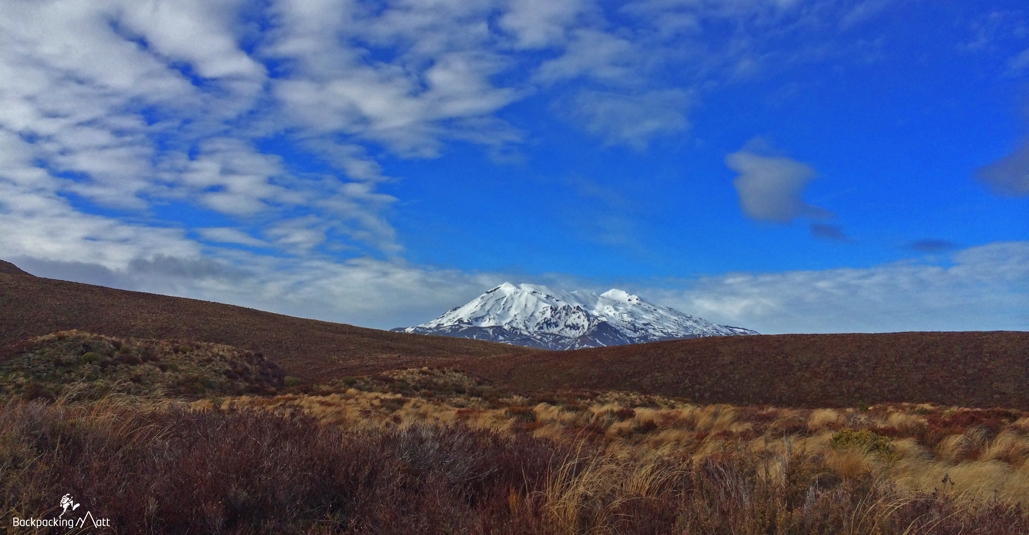
While not all New Zealanders are alpinists, many of them have a passion for tramping. Tramping translates to hiking, or more specifically heading out for long and often multi-day walks in the hills. Why wouldn’t you? Walk a section of any one of New Zealand’s hundreds of kilometers of hiking trails, and you’ll be rewarded with pristine native bush, snow-capped mountains, beaches, golden tussock and out of this world views.
With 14 national parks covering over 30,000 square kilometers, there are no shortages of places to go tramping. New Zealand wasn’t far behind the US in establishing its national parks. Tongariro National Park was the first to be established in New Zealand in 1887, only 15 years after President Ulysses S. Grant established Yellowstone National Park – the first in the world.
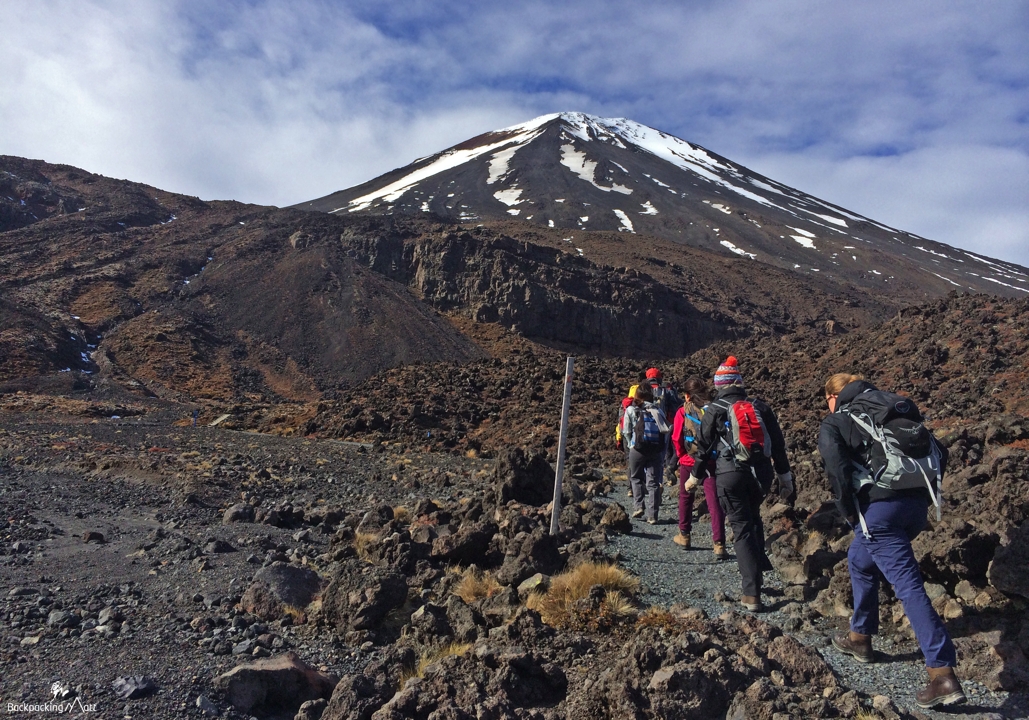
In the realm of hiking trails in New Zealand, none is more popular than the Tongariro Alpine Crossing – a 19km (12 mile) one-way tramp across the volcanic landscapes of the Tongariro National Park. This one day walk is often referred to as the best one day walk in New Zealand, and perhaps even the world.
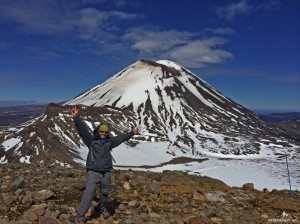
In the five years I’ve been in New Zealand I’ve been to New Zealand’s oldest national park more than once, and each time I’ve tried to walk the Tongariro Crossing, but regretfully Mother Nature has never allowed this.
The Tongariro National Park is situated directly in the middle of the North Island, and being more elevated that the rest of the land mass it often catches the brunt of whatever weather system is rolling in off the Tasman Sea.
Luckily for me, this wasn’t the case last month when I was driving through the national park, and I had the opportunity to hike the “Best One Day Walk” in New Zealand with Stewart from Adrift Outdoors.
The Tongariro Alpine Crossing starts like just about every other hike in New Zealand. An unassuming trailhead with the Department of Conservation issued sign that tells you what lies ahead. Except in Tongariro, next to the DOC sign with the over-exaggerated time that the hike will take, you have warnings that you’re entering an active volcano zone.
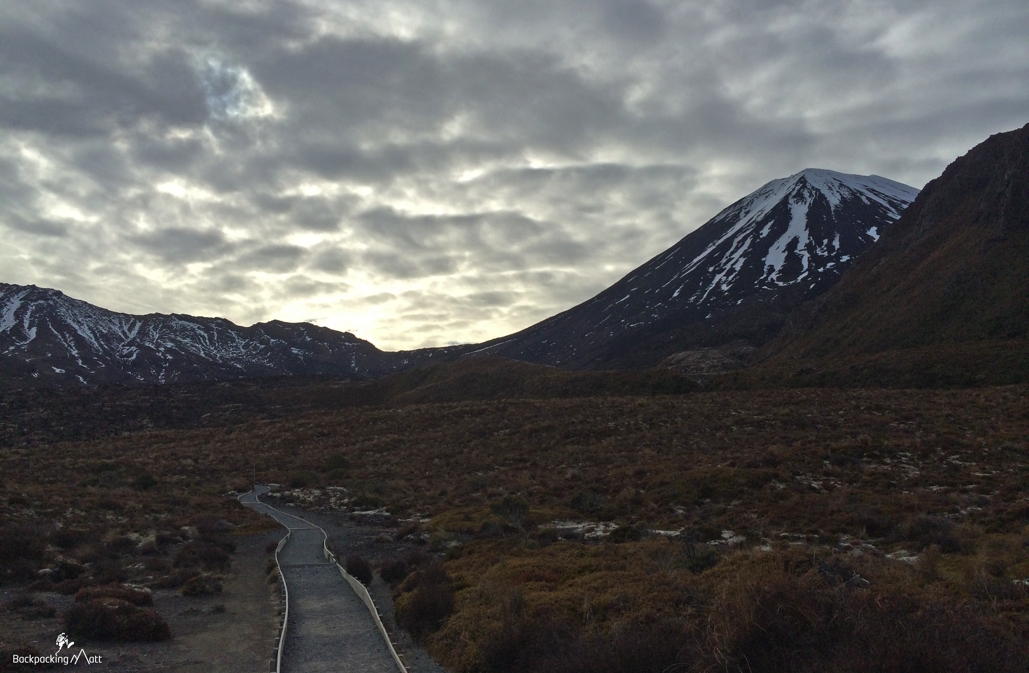
The Tongariro Alpine Crossing takes you past three active volcanoes – Ngauruhoe, Ruapehu and Tongariro – with the later having erupted as recently as November of 2012. Luckily when the Te Maari crater on the northern slope of Tongariro erupted, no one was injured – but this could have easily not been the case, especially as a piece of volcanic rock hurtled from the crater and through the roof of one of the huts in the National Park.
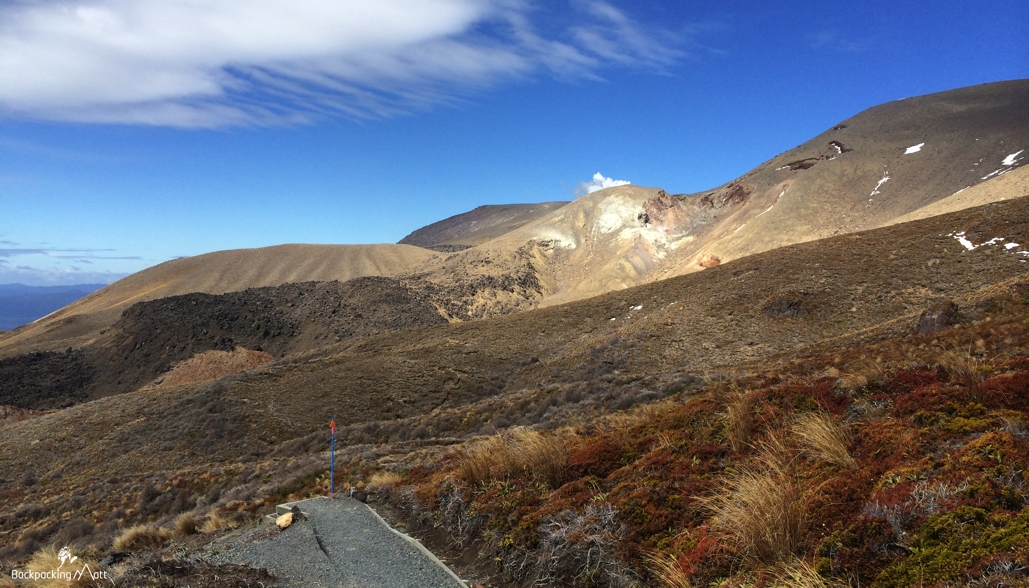
But alas, you’re just as well of not thinking about that, and rather focus on what’s ahead – a 19km hike through stunning volcanic terrain – past emerald blue lakes and steaming volcanoes. The 19km hike will take you anywhere from 6-8 hours to complete, depending on your fitness and the time of year.
It’s an incredible experience, a New Zealand must do that should be high up on your New Zealand bucket list.

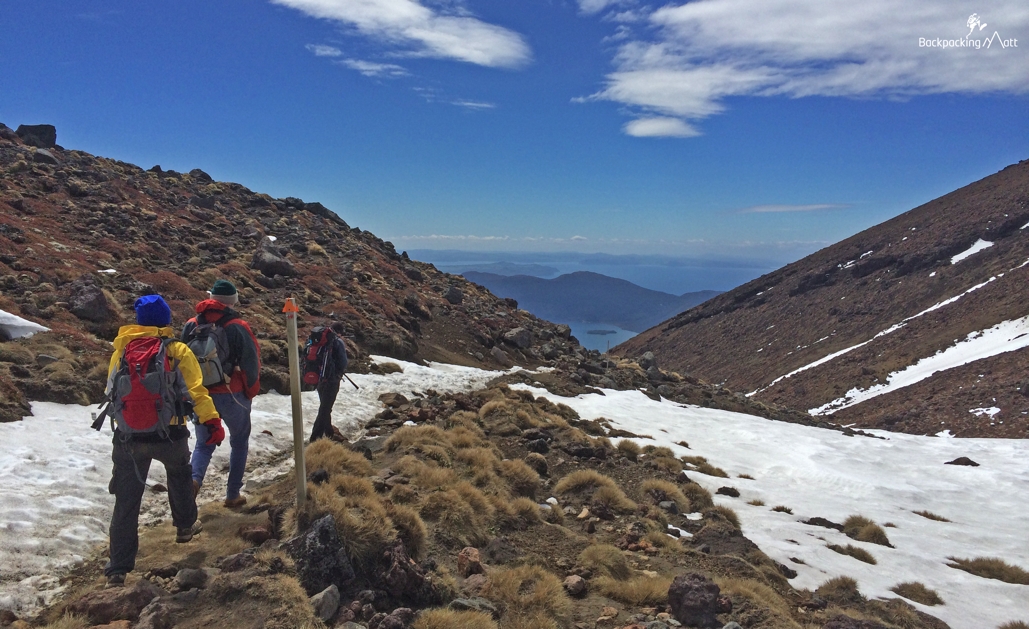

Tongariro Alpine Crossing Logistics
- During the winter months, you’ll have to walk the tramp guided as snow and ice make it impassable to anyone but experienced alpinists.
- During the summer months, you’ll need a shuttle to get back to your car or your local accommodation. Stewart and Adrift can sort you out with both, and also ensure you have proper gear for this alpine crossing.
- The nearest accommodation to the Tongariro Crossing trailhead is in National Park or Whakapapa. The Park Hotel offers everything from dorm room accommodation to ensuite hotel units (with a bar and spa pool on site, just what you need after walking 19 kms). There’s not much for shopping in town, so you best pick up your supplies be for you arrive. Further afar, you can also stay in Taupo – although this makes the crossing day a big one, with your pick-up likely being at about 6am.
- As the name implies, this is an alpine crossing and one that shouldn’t be taken lightly. You should have multiple layers of clothes, a rain jacket, and ample water and food as the weather can and will change rapidly.
- You can walk the Crossing from either direction, but most choose to start at the Magatepopo end as its higher at 1,120 meters.
Thanks to Europcar for providing the wheels that got me around New Zealand, and thanks to Stewart for guiding me across the Alpine Crossing.

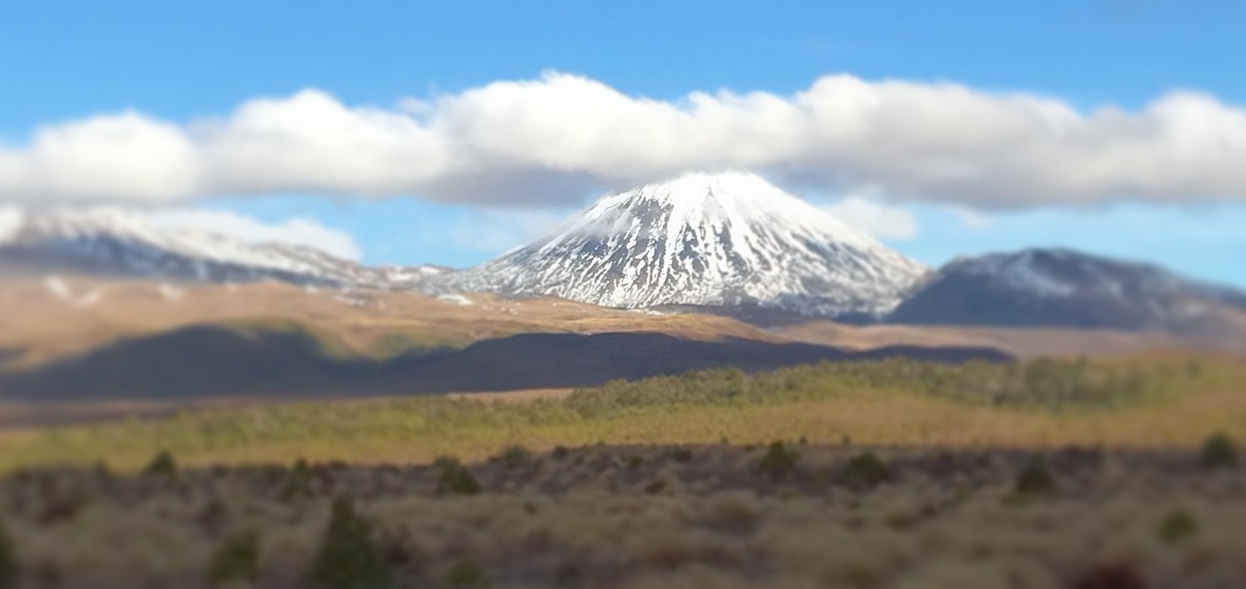
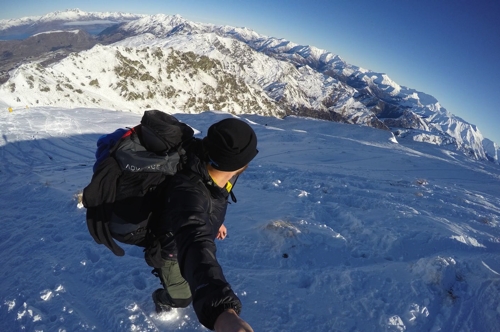
 Backpacking Matt
Backpacking Matt 




i just did the crossing about two weeks ago in awesome weather and found it to be possibly the most difficult 8 hours of my life! The views are more than amazing, but really challenging for the mind, the heart, and the body. So glad I did it though!
Good hiking boots and warm clothing definitely go a long way for this hike!
Nice article and amazing pictures!
I’m planning to do the crossing this coming January but after reading this and the comments I feel like I may be a little unprepared… What would your advice be?